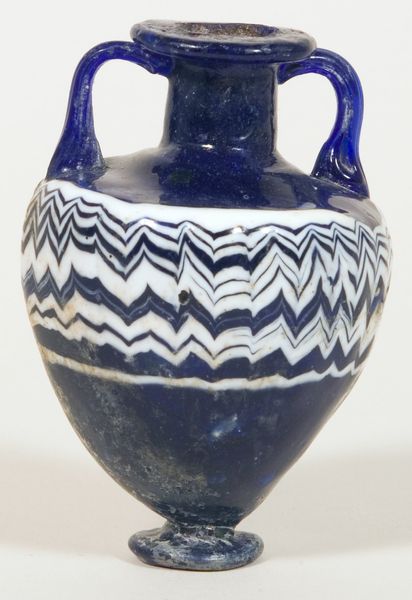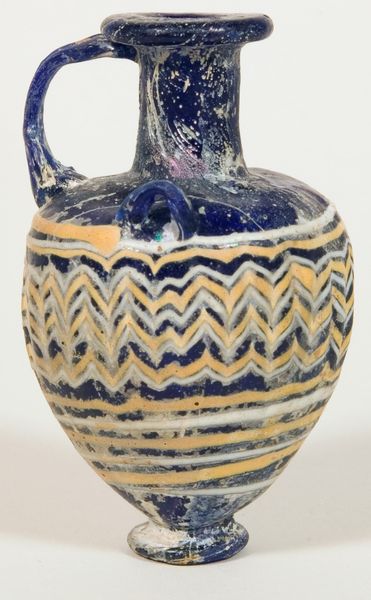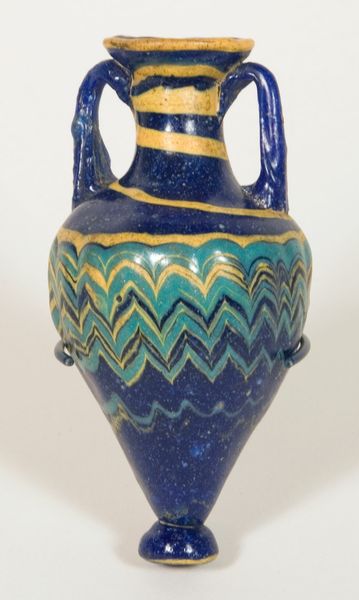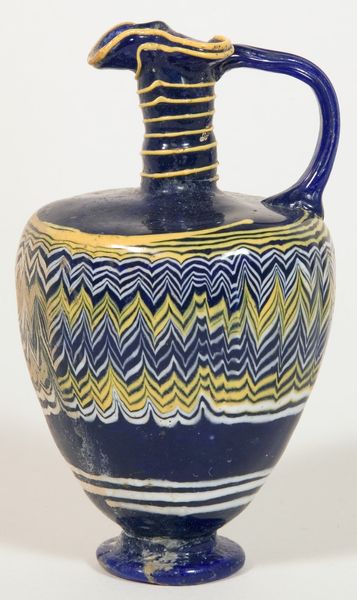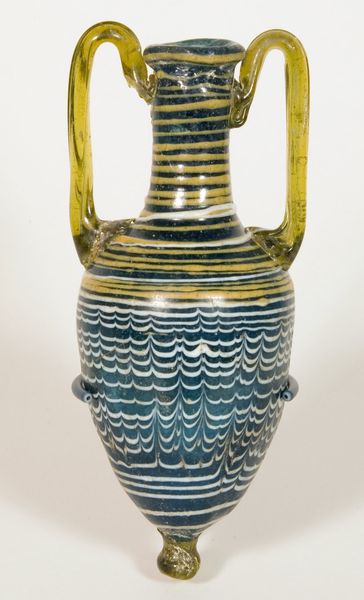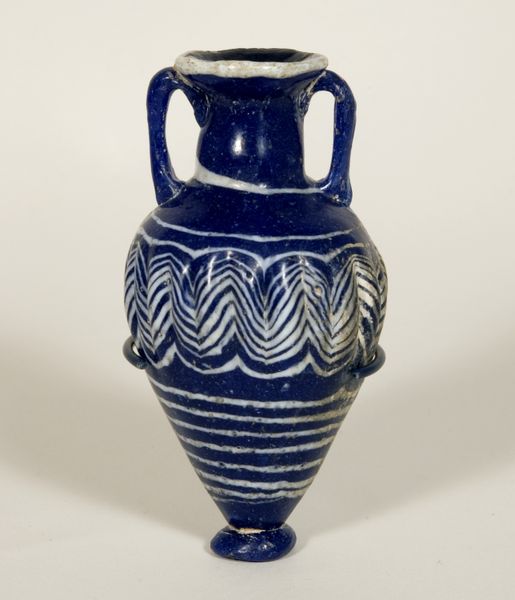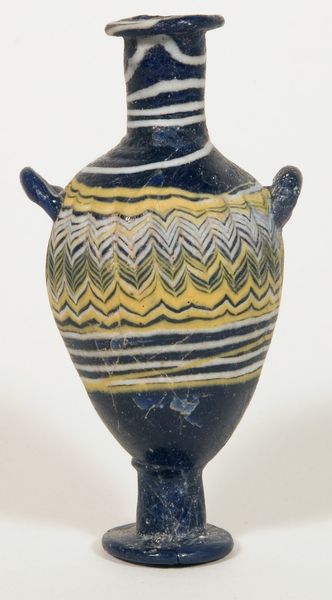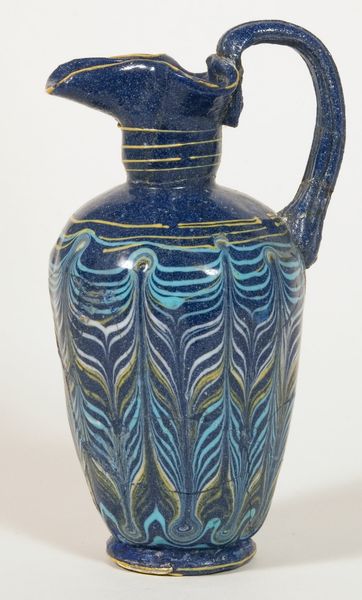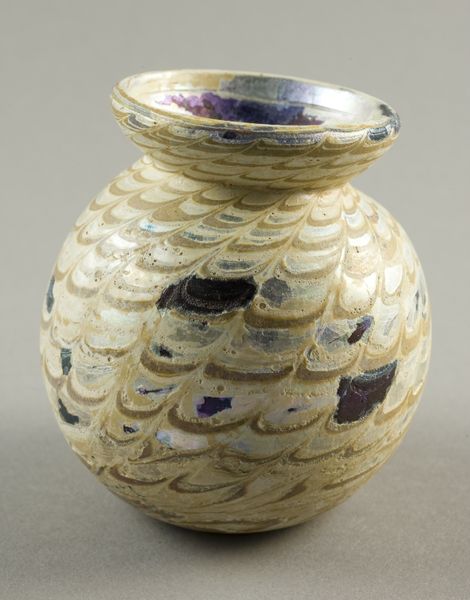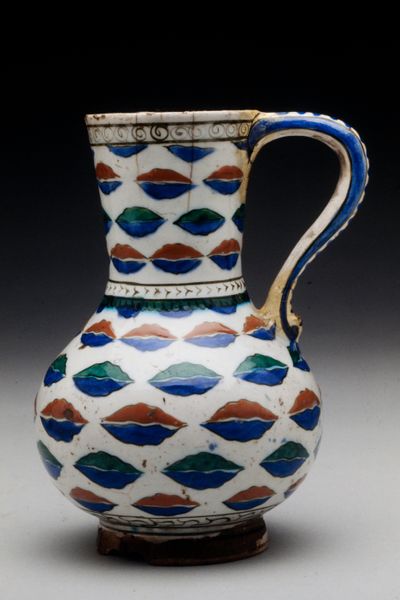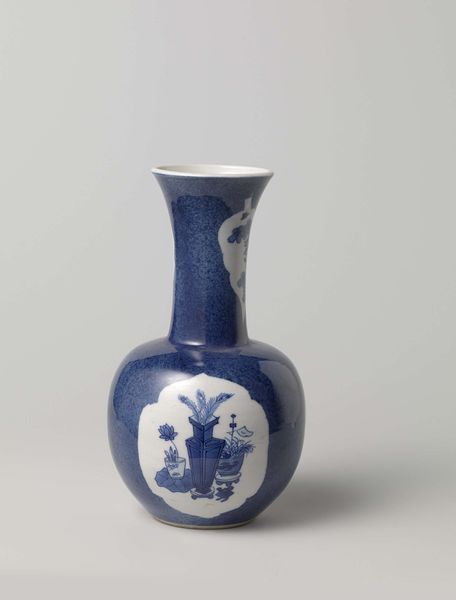
ceramic, glass
#
ceramic
#
glass
#
vessel
#
ancient-mediterranean
#
ceramic
Dimensions: 6.7 × 4.6 × 4.6 cm (2 5/8 × 1 3/4 × 1 3/4 in.)
Copyright: Public Domain
Editor: Isn't this "Hydriske," dated to around the mid to early 4th century, so fascinating? It’s this delicate ancient glass vessel. It strikes me as surprisingly modern with its vibrant blue and striking white chevron patterns. What can you tell me about this work? Curator: It is indeed striking. Looking at the socio-political context of its time, consider the symbolic power such a vessel held. Blue glass, in particular, was costly to produce. Its presence in funerary or ritual contexts tells us something about the patron who commissioned it or its potential uses by various elites. Editor: So, this Hydriske may have had political associations tied to class? Curator: Precisely. Luxury items were potent displays of wealth and status, then just as much as they are today. Think about the social dynamics that drove the demand for such exquisite, visually arresting objects, and who would commission such specialized skills and materials for display. Editor: I never thought about it in terms of social statements. Do we know what it would have been used for? Curator: Vessels such as this were most often used in ritual or funerary practices. The size suggests it contained oils, perfumes, or medicines for special occasions. Knowing the intended destination is paramount to its potential message. Would you agree that these social connections are pivotal in understanding art history? Editor: Definitely. It shows art as an integrated component of everyday life instead of being viewed on an isolated plinth in a museum setting! Curator: Precisely, looking through the lenses of social and historical analysis allows us a more in-depth reading of works like this. Editor: It reframes the piece for me. Thanks!
Comments
No comments
Be the first to comment and join the conversation on the ultimate creative platform.
